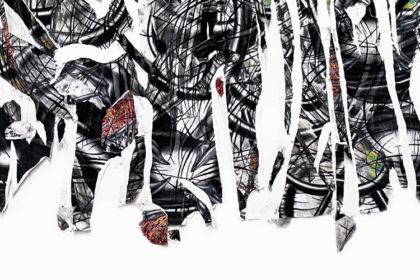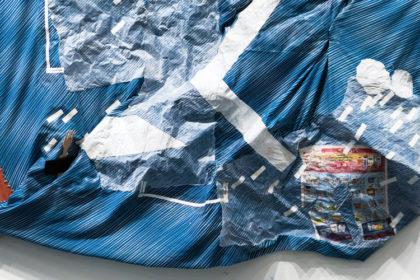We are delighted to announce our collaboration with the esteemed Global Talent Art Prize. As part of this collaboration, we are thrilled to present the main winners of the 5th edition. We are happy to share an interview with the 2nd winner, Aleksandrina Yordanova, a talented artist hailing from Slovakia. Join us as we delve into her creative journey and explore the inspiration behind her remarkable work.
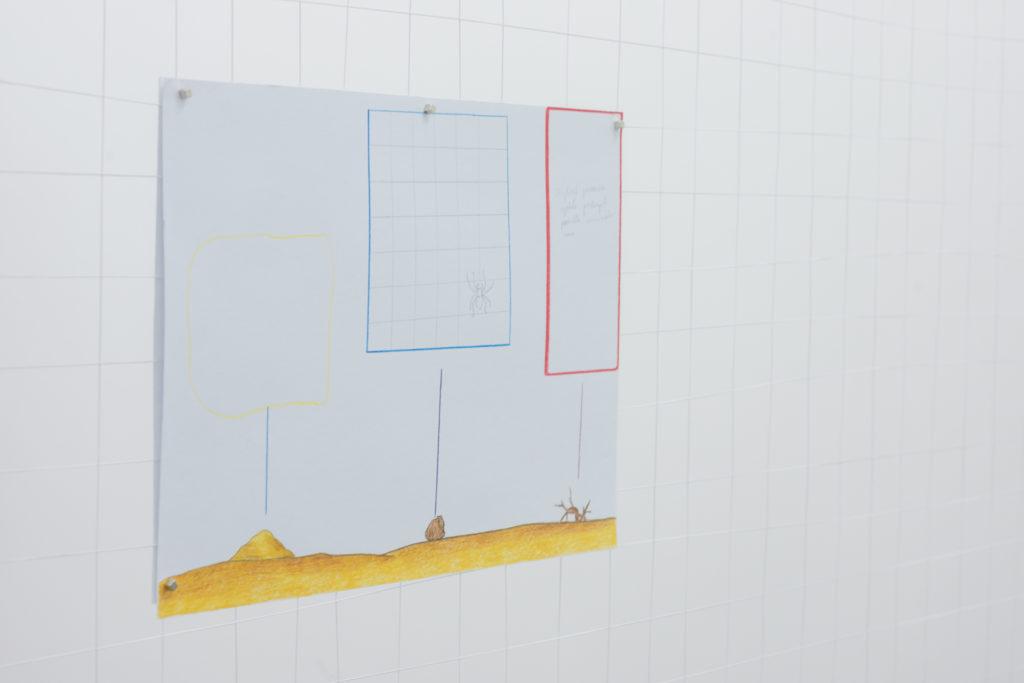
‘Language’, coloured pencils on paper, 29,7x42cm, 2017
1. Can you recall the moment you knew you wanted to be an artist? What made you interested in arts?
I wanted to be an artist since I was a child. I just liked to draw and paint and create things that were beautiful to me.
I enjoyed discovering various new techniques, materials, and methods of art over time. That’s why I studied art at many different schools – from elementary art school, through high school, and then at university, academy, and in internships abroad. I’ve studied several different fields, but painting is the main medium for me that I keep coming back to.
If I had to remember a specific thing that made me know that I wanted to become an artist, I would say that it was the classes at the elementary art school where there was a strong smell of colors which I loved.
My work was influenced very strongly in my childhood and adolescence by several people whom I am grateful to and would like to mention. In the first place, it was my primary school teacher, who taught me how to draw. Thanks to her, I started to perceive drawing as a way of looking at things, I found out that I never really look at things, and by drawing, I notice much more detail than with a regular view. Another person who positively influenced me was my high school teacher, who took me to contemporary art exhibitions and introduced me to art created by younger artists. This experience opened up another artistic horizon for me.

‘Language’, coloured pencils on paper, 29,7x42cm, 2017
2. Tell us about your artistic process and the way you brainstorm ideas? What do you usually start with when creating? How do ideas become artworks?
Ideas come to me by themselves. Maybe it’s because I think a lot about art. Mostly it is when I go for a walk or while traveling by train or bus, while doing nothing or when I am working on a new project, which shows me other possibilities of processing the subject. Sometimes I experience a strong feeling that I need to express. I have to find it and define it. Or it’s a desire to depict something specific that I haven’t paid attention to yet.
This feeling is like when you are communicating with someone and after your conversation ended you feel that something was left unsaid. Once I have a clear idea of what I am going to do, I create different tests of materials and colors. I draw a lot of sketches and small drawings that capture my ideas. Then I put all these elements together into one larger piece. Sometimes I create a complicated image composed of many elements, sometimes I use one motif, which is simple, clear, and does not need to be supplemented with anything else.

‘Language’, instalation, metal konstruction, strings, paper, 150×280 cm, 2017
3. Do you have or have had a mentor or another special person to guide you?
When I studied at the academy, there were many great sources that the school offered me to get inspiration from. Also, I am very grateful to my professors, who were great and I learned a lot from them. They supported my work during and after school. Thanks to them, I had the opportunity to be among artists and to get to know the art world. On the other hand, I have to admit that there was a period of time when I was very interested in the work of the artist Ilya Kabakov. I really liked his sense of humor and the way he is able to incorporate illustrations into visual art. At the same time, the theme of emptiness that he writes about in his texts often appears in my work too.
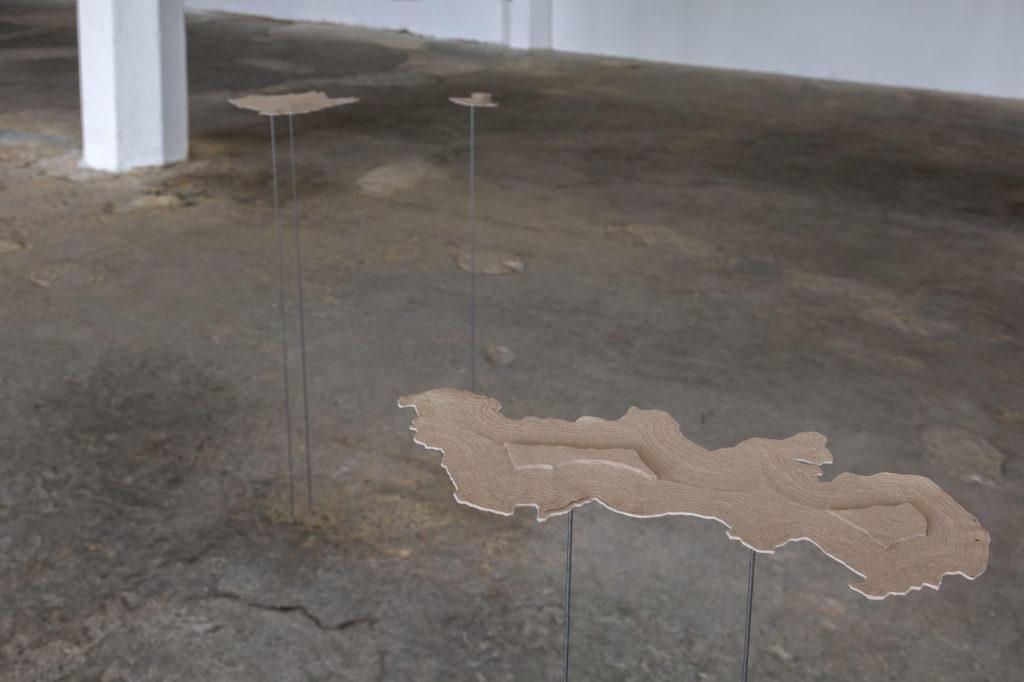
‘A few steps away’, instalation, paper, metal rods, 2019
4. How has your style changed over the years? If yes, could you explain why?
My style has changed a lot over the years. It is related to my studies at the academy, where I tried to find a way of my own creation. Also, I never focused my attention on creating a style. I always started from an idea or some feeling that I had at that moment or a message that I wanted to express.
I think style is formed by making a series of small decisions that form the result. Over time, my personality has changed, and the way I think and perceive the world has also changed. With these changes, so did my small decisions that guided my visual style, which changed with each piece and continues to change.
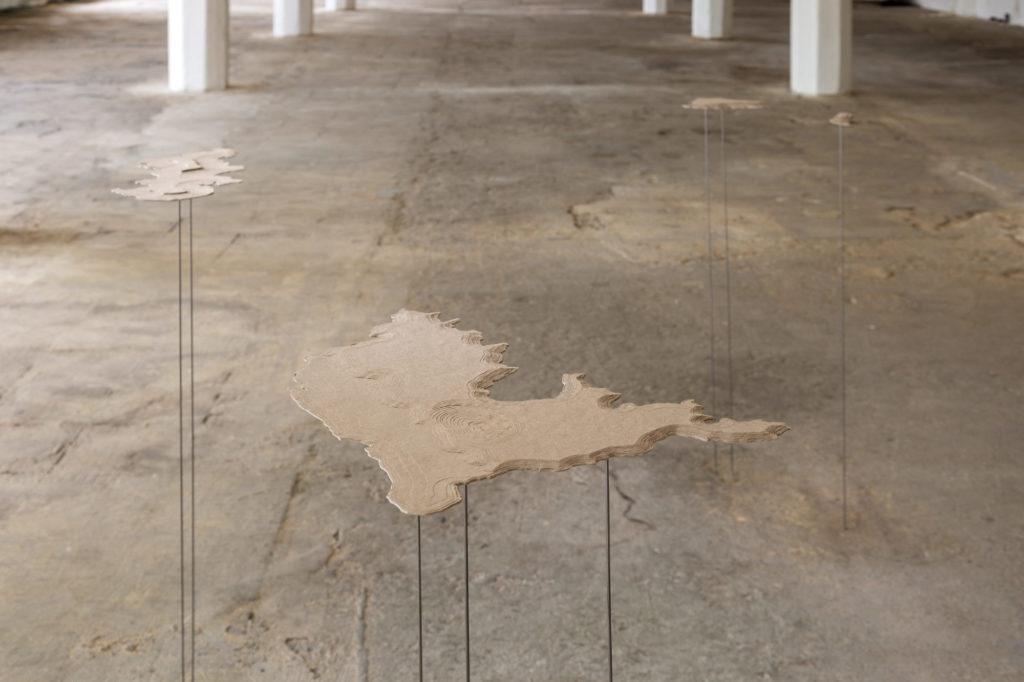
‘A few steps away’, instalation, paper, metal rods, 2019
5. What kind of message do you wish to convey in your art?
I am currently looking for peace and a place that can be considered a safe mental refuge. I create my paintings in such a way that they inspire viewers to slow down, to recall a nice feeling of rest, inactivity, or timelessness. The book by Eckard Tolle called The Power of the Present Moment served as an inspiration for the topic of mental emptiness, which showed me a way to find peace and a safe place in my mind during times of mental stress. I am interested in the emptiness of space, cleared of useless things, as a metaphor for mental emptiness or escape from strong emotions. At the moment, it is more important for me to keep my faith and calmness than to contribute to the collective anxiety by drawing attention to various problems that are happening far away from us. At the same time, I believe that people can support others just by feeling good for themselves.
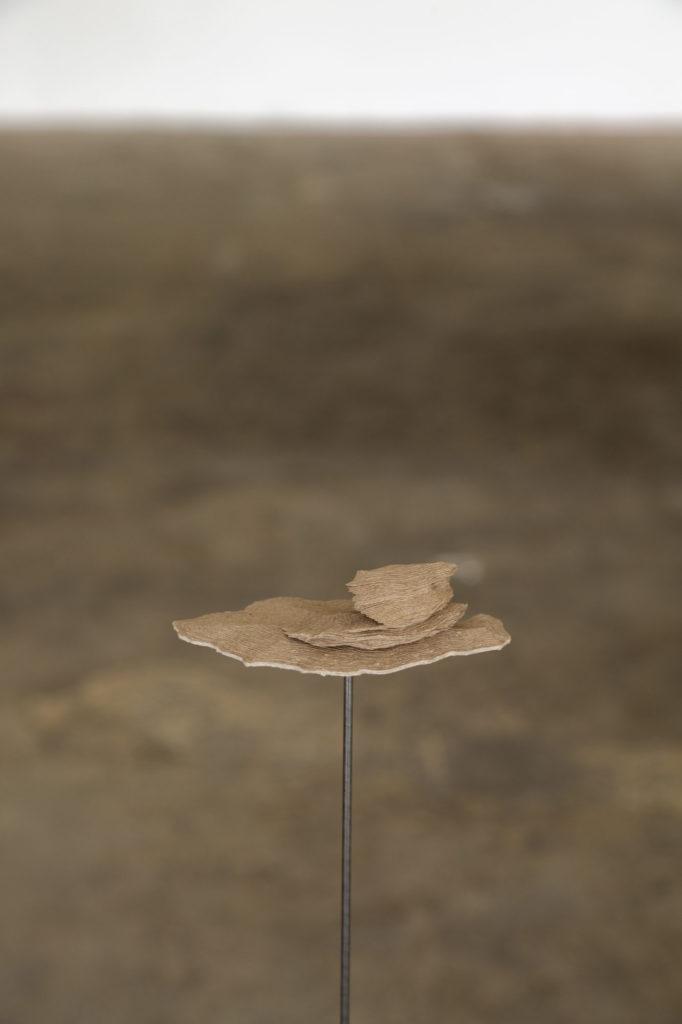
‘A few steps away’, instalation, paper, metal rods, 2019
6. Tell us more about what project you are currently working on?
I am currently working on paintings that depict group portraits in nature. The project is about relationships, emotions, nature, and what is natural, childhood, faith, relationship with nature, and the intersections of these topics. My current project follows on from my two previous projects in which I worked with the human figure, expressions, and attitudes. Nature is the second main motif of the paintings. In this project, I am trying to point out the relationship between human and nature, but at the same time, there are female characters that point out certain female qualities like tenderness, sensitivity, or patience, etc.
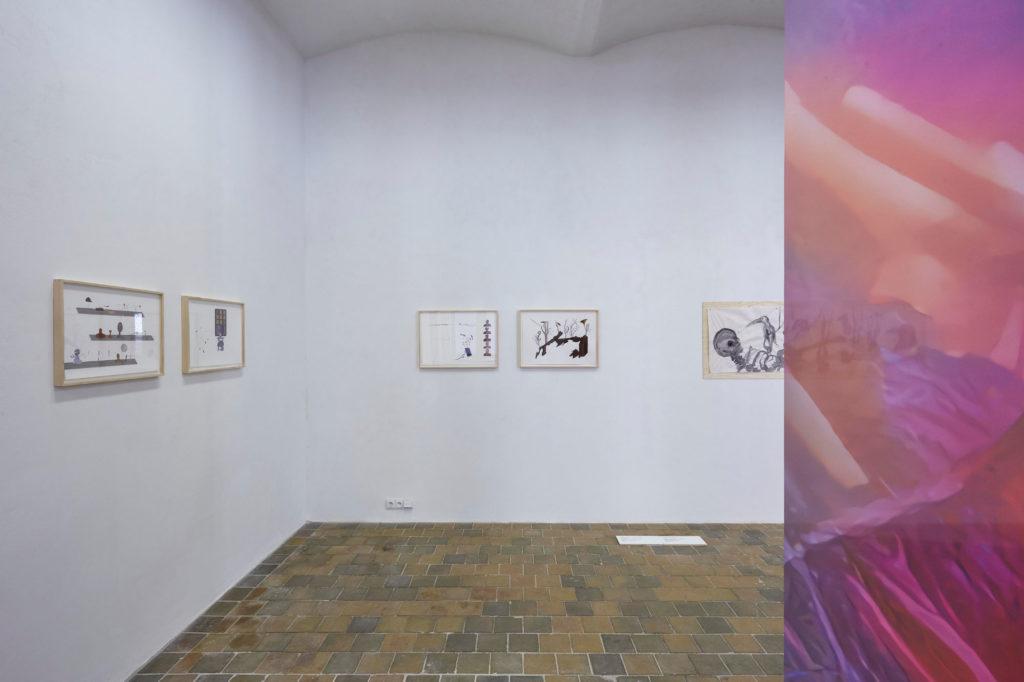
‘Hey man!’, instalation, 2018
7. What will be your next project?
I would like to follow up with my new project, where I would focus on the connection between human and nature. Nature is currently a very important source of inspiration for me. Since I moved from a big city to a smaller town near the mountains, I am much closer to nature. I see now some environmental issues in a different way than when I lived in Prague. I also realize how much consumer life in a big city is, without one realizing it. Even if I did not want to participate in it, just the fact that there are many more opportunities for consumption, social activities, and material production. Even though I am aware of these things, I would like to express in my work the feeling of being absorbed by nature. Pointing out environmental problems is not my goal. Rather than dealing with the problems with a sense of, I am focused on human feelings and how to deal with them.

‘The busts’, tempera on paper, 42×59,4cm, 2018
8. What is your dream project?
Actually, I am interested in creation itself. It is the most important to me. I think creation can go somewhere, but I don’t see it as going from worst to best. I don’t even see it as a development, more like a change. I’m constantly changing my projects, but I can’t clearly say which one is the best, and I also don’t want to compare them. Also, I would like to create a work that will be an inspiration for every person and that will support the viewer to faith and feelings of harmony. Something like the work of Hieronymus Bosch or Albrecht Dürer that will be clear to understand, inspiring, and relevant for future generations.
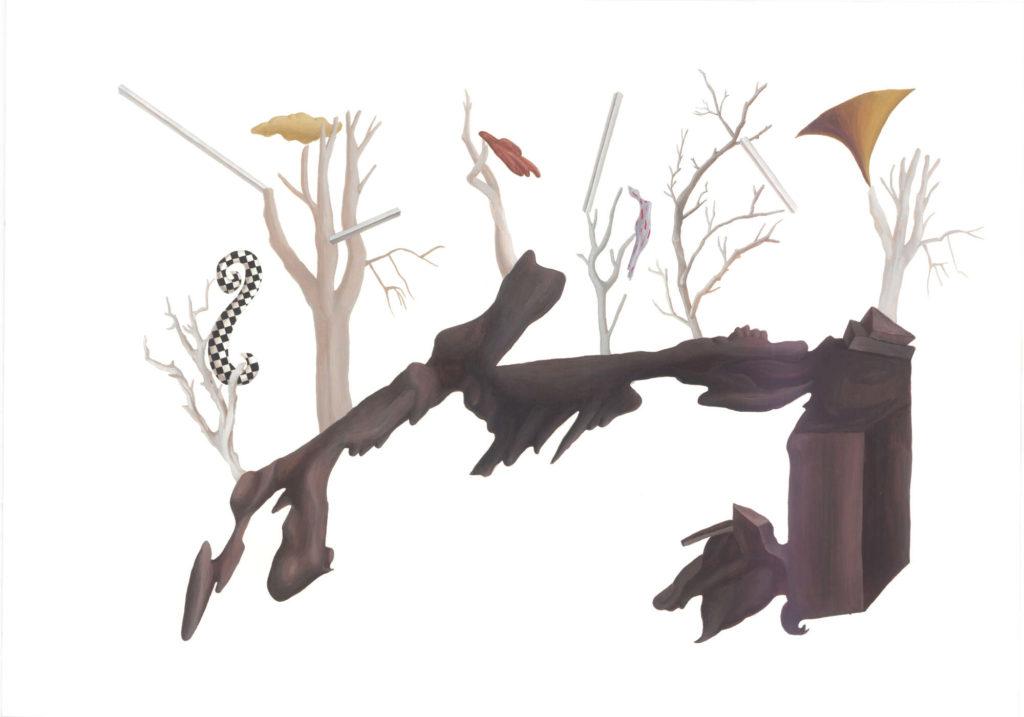
‘The landscape’, tempera on paper, 42×59,4cm, 2018
9. There are many descriptions of the ideal state of mind for being creative. What is it like for you?
If I have to describe how I create my projects, it is a process that has different phases. Primarily, there is a feeling of fascination. This is when I come up with ideas. Then, while working on the project, I feel emotions of uncertainty, fascination, joy, and frustration. When a project is nearing its end, I feel satisfied mostly for a while. Then the feelings of uncertainty return, which alternate continuously with satisfaction. On the other hand, thanks to this emotional carousel, I have the motivation to start creating again. It gives me hope that the next project will bring me more satisfaction and appreciation. Usually, this process repeats in the same way over and over again.
10. What is art for?
Art is freedom for me.
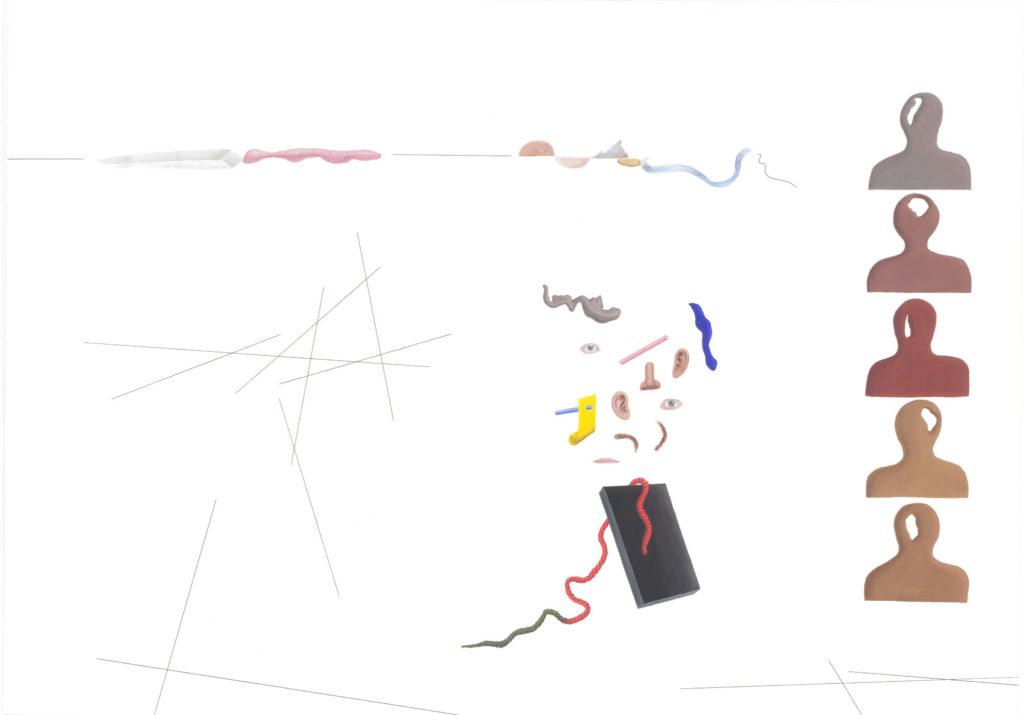
‘The observed’, tempera on paper, 42×59,4cm, 2018
11. Thanks for the opportunity to interview you as the 2nd Prize Winner of the Global Talent Art Prize (5th edition). Are there any final thoughts, in particular for the ones who would like to follow your way?
Sometimes it’s hard not to be influenced by someone else’s work. This has happened to me often in the past. Currently, I am trying not to succumb to temptation and not to be swayed by trends. Allow yourself to live in your world and enjoy it. Do not be afraid to show who you are, what you like, what you feel, and what interests you the most. I spent a long time learning from others how to make art and what real art is. I have come to the conclusion that I will not find the answer to this question, because the answer is different for each person. Every individual has their preferences, what they like, and what is important to them. They have a different feel for things and life experiences, etc. These preferences are manifested in their choice of art, which they might consider meaningful. That’s why I think it makes sense to follow your intuition and trust your judgment. Only in this way will we preserve the diversity of artistic production, where it will be possible for each individual to be an original being.
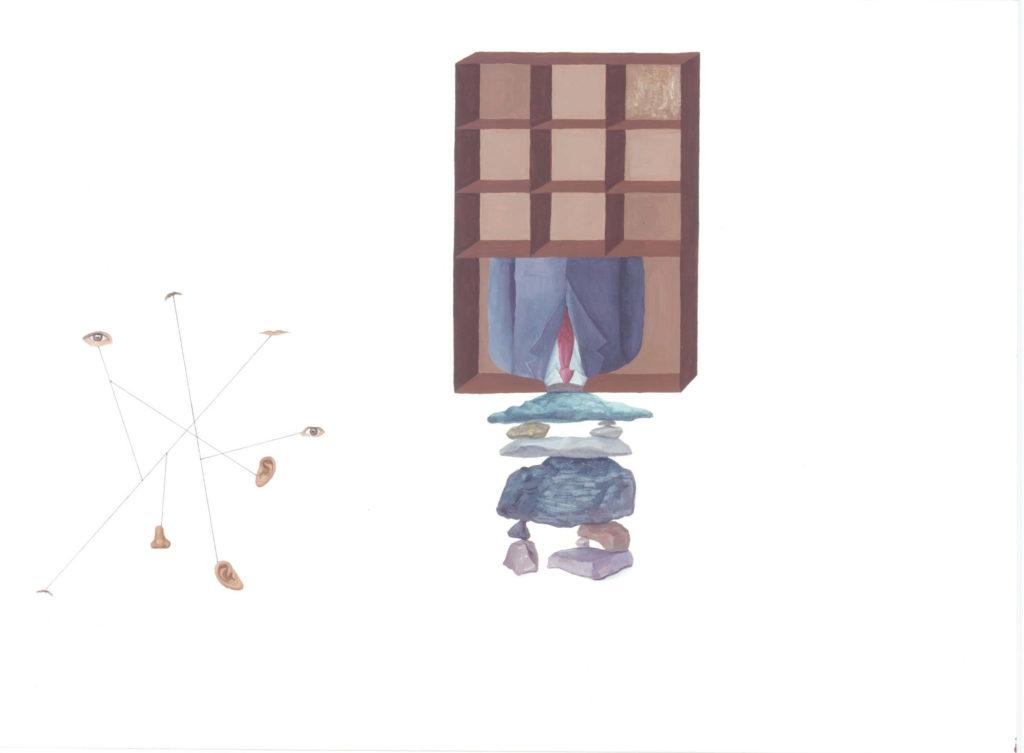
‘The suit’, tempera on paper, 42×59,4cm, 2018




